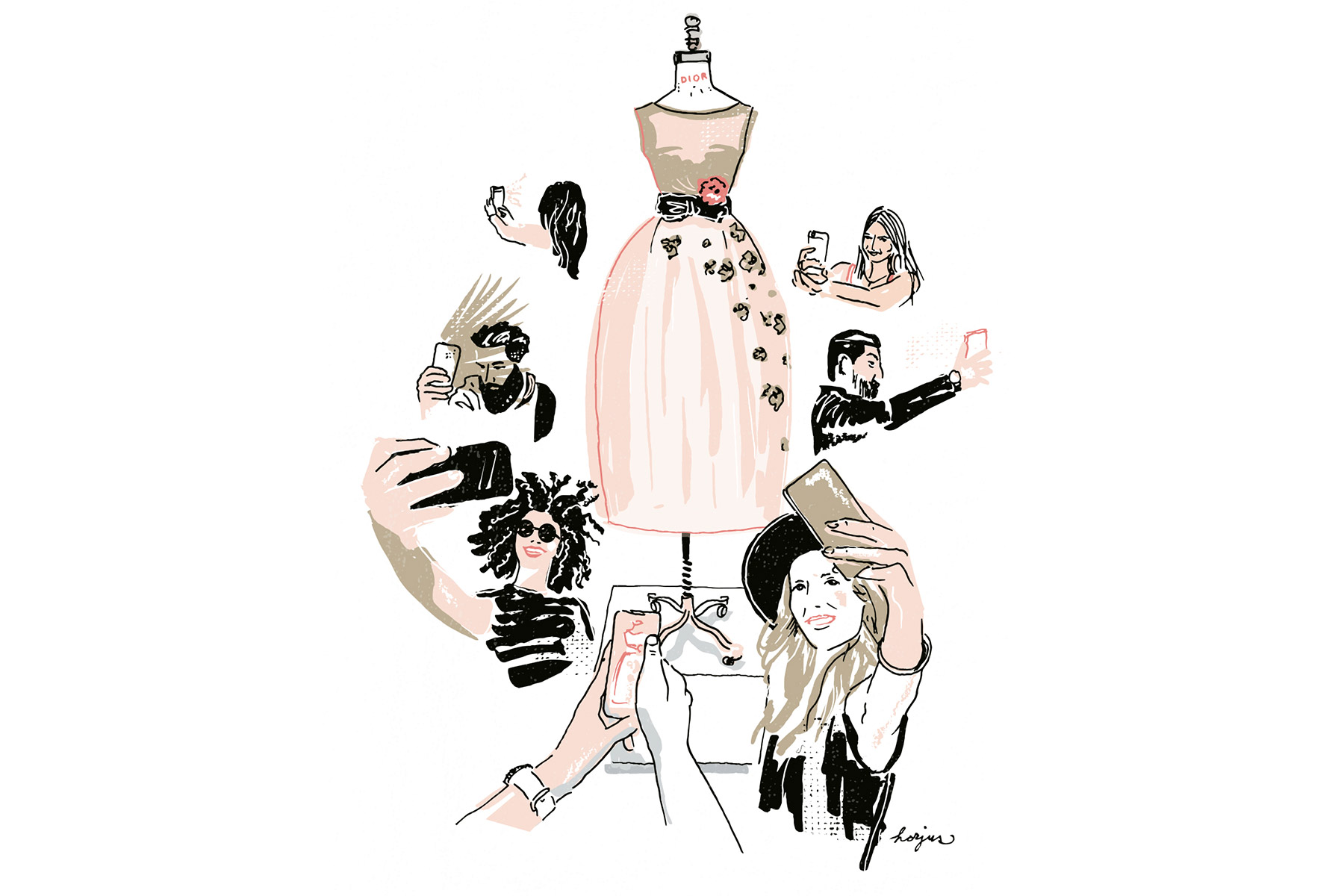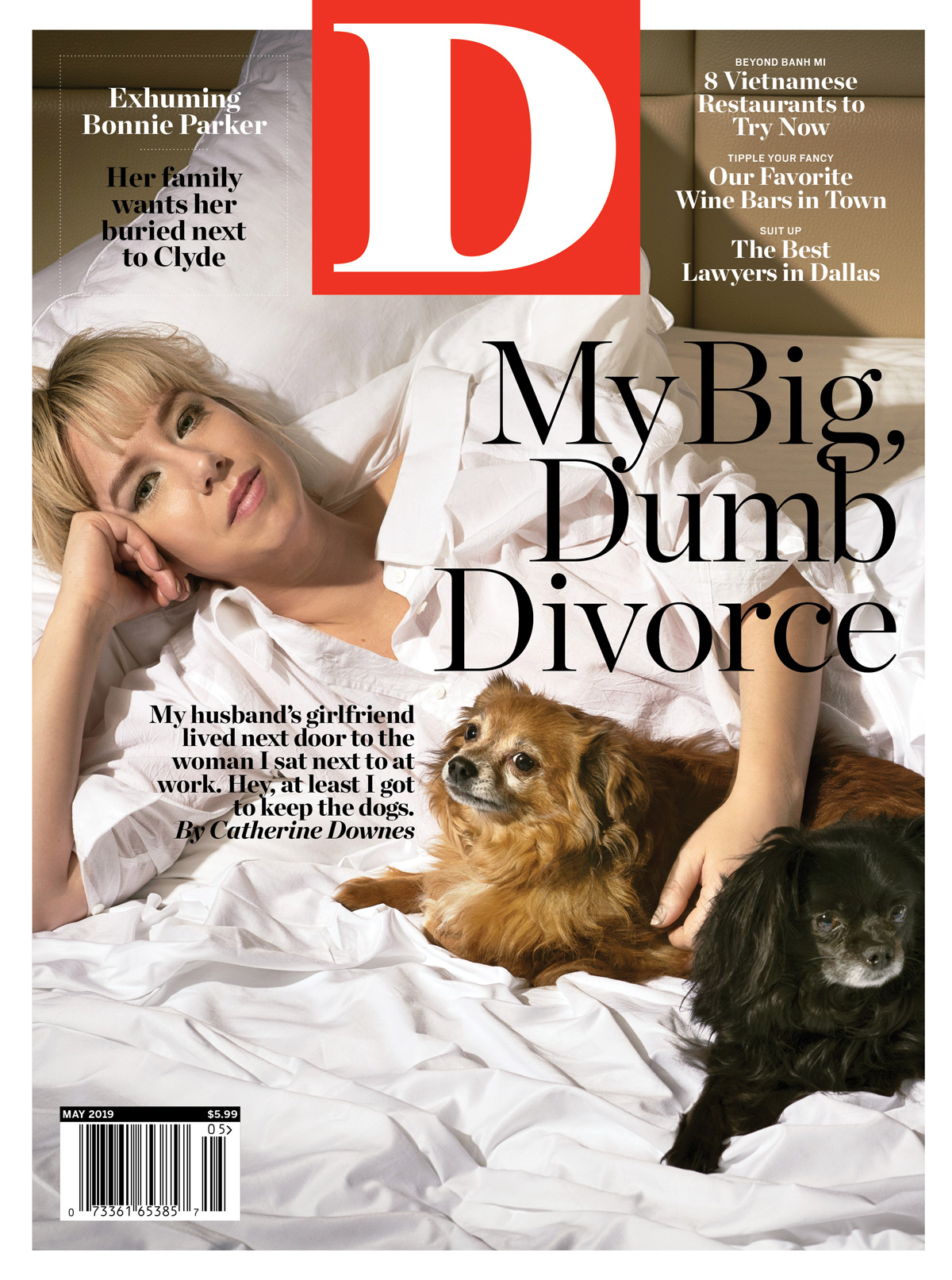Fashion and fine art are usually mutually exclusive spheres. Bring the two together, though, and something unlikely happens: couture becomes accessible to everyone. Take, for instance, “Dior: From Paris to the World,” a survey of the fashion house’s history opening at the Dallas Museum of Art on May 19. The exhibit comes fresh from its debut at the Denver Art Museum, where its run was extended due to popular demand. Here, a $20 ticket opens the rarefied world of haute couture—from Christian Dior’s “New Look” to the voluminous gown responsible for Jennifer Lawrence’s infamous Oscars fall—to anyone who cares to explore it. As it turns out, a lot of people do.
In North Texas, that’s already shown to be true with designer-focused exhibitions like Iris van Herpen at the DMA, Jeremy Scott at the Dallas Contemporary, and “Balenciaga in Black” at the Kimbell Art Museum. The latter drew an impressive 32,762 visitors. In anticipation of the madness, the DMA started selling date- and time-specific tickets for “Dior: From Paris to the World” more than a month ahead of its opening.
“Art institutions now recognize fashion as important as fine art and as a form of expression as important as art,” says Florence Müller, Denver’s curator of textile art and fashion, who curated the Dior exhibition. “They are also a trend worldwide because they are extremely popular and draw large crowds.”
Museums have flirted with fashion for decades. The Metropolitan Museum of Art’s Costume Institute is certainly to thank for taking the relationship to the next level with its annual fashion exhibitions. Last year’s “Heavenly Bodies” attracted 1.65 million guests, making it the Met’s most-visited exhibition of all time.
“People don’t always have paintings or sculpture in their everyday life, but everybody gets dressed in the morning,” says Annette Becker, director of the Texas Fashion Collection at UNT. “People feel an innate interest in fashion, and that translates to attendance records.”
Without a doubt, social media has driven demand. Beautiful clothing is photogenic, especially when arranged in dramatic sets, like the ones created for “From Paris to the World.” Backdrops like a wall of white-on-white toile and a rainbow of red, green, and blue garments will surely make for popular photo ops. Add a couture logo and you’ve got a recipe for Instagram clout. Even the tickets carry a designer label.
“I think it makes sense that museums are excited about engaging in luxury brands. They have such appeal. Getting that [traction] is kind of critical for museums to be financially responsible and stable,” Becker says, adding that it may put museums in an ethically tricky position.
Some questions these exhibitions bring up: how critical can a fine art museum really be when partnering with a commercial brand? The exhibitions are first and foremost a visual feast, of course, but is there an obligation to address the brand’s social legacy, too? What if the Dior exhibition glosses over the unseemly parts of the house’s history, like the racist slur that ended John Galliano’s run as creative director or Christian Dior’s arguably regressive views of women postwar?
“We’re preserving the history of the 1 percent of the 1 percent, which overwhelmingly is a very specific version of femininity and informed by a very specific standard of beauty,” Becker says. “I think it’s important to think about the institutional context that we’re seeing these pieces in. It’s about high design.”
Then again, it’s not like conventional artists are presented with any more critical consideration. Sarah Schleuning, senior curator of decorative arts and design at the DMA, doesn’t think that a museum aligning itself with a commercial brand is problematic. “In the design field in particular, we deal with a lot of things that are consumable,” she says. “We have a high ethical standard that we adhere to, and I do think we’re showing it because they’re great works of art.”
Like so many paintings hanging in the galleries, these works have a signature. It just happens to be a logo.
In North Texas, that’s already shown to be true with designer-focused exhibitions like Iris van Herpen at the DMA, Jeremy Scott at the Dallas Contemporary, and “Balenciaga in Black” at the Kimbell Art Museum. The latter drew an impressive 32,762 visitors. In anticipation of the madness, the DMA started selling date- and time-specific tickets for “Dior: From Paris to the World” more than a month ahead of its opening.
“Art institutions now recognize fashion as important as fine art and as a form of expression as important as art,” says Florence Müller, Denver’s curator of textile art and fashion, who curated the Dior exhibition. “They are also a trend worldwide because they are extremely popular and draw large crowds.”
Museums have flirted with fashion for decades. The Metropolitan Museum of Art’s Costume Institute is certainly to thank for taking the relationship to the next level with its annual fashion exhibitions. Last year’s “Heavenly Bodies” attracted 1.65 million guests, making it the Met’s most-visited exhibition of all time.
“People don’t always have paintings or sculpture in their everyday life, but everybody gets dressed in the morning,” says Annette Becker, director of the Texas Fashion Collection at UNT. “People feel an innate interest in fashion, and that translates to attendance records.”
Without a doubt, social media has driven demand. Beautiful clothing is photogenic, especially when arranged in dramatic sets, like the ones created for “From Paris to the World.” Backdrops like a wall of white-on-white toile and a rainbow of red, green, and blue garments will surely make for popular photo ops. Add a couture logo and you’ve got a recipe for Instagram clout. Even the tickets carry a designer label.
“I think it makes sense that museums are excited about engaging in luxury brands. They have such appeal. Getting that [traction] is kind of critical for museums to be financially responsible and stable,” Becker says, adding that it may put museums in an ethically tricky position.
Some questions these exhibitions bring up: how critical can a fine art museum really be when partnering with a commercial brand? The exhibitions are first and foremost a visual feast, of course, but is there an obligation to address the brand’s social legacy, too? What if the Dior exhibition glosses over the unseemly parts of the house’s history, like the racist slur that ended John Galliano’s run as creative director or Christian Dior’s arguably regressive views of women postwar?
“We’re preserving the history of the 1 percent of the 1 percent, which overwhelmingly is a very specific version of femininity and informed by a very specific standard of beauty,” Becker says. “I think it’s important to think about the institutional context that we’re seeing these pieces in. It’s about high design.”
Then again, it’s not like conventional artists are presented with any more critical consideration. Sarah Schleuning, senior curator of decorative arts and design at the DMA, doesn’t think that a museum aligning itself with a commercial brand is problematic. “In the design field in particular, we deal with a lot of things that are consumable,” she says. “We have a high ethical standard that we adhere to, and I do think we’re showing it because they’re great works of art.”
Like so many paintings hanging in the galleries, these works have a signature. It just happens to be a logo.







